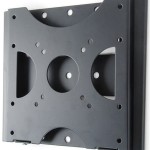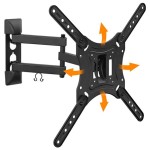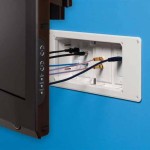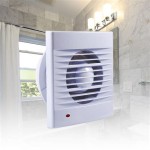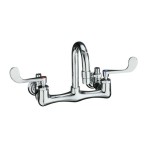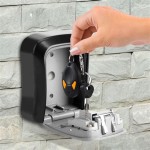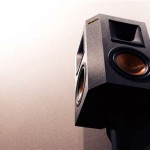Medical Chart Holders: Optimizing Efficiency with Wall-Mounted Solutions
Medical chart holders are essential components of healthcare facilities, playing a crucial role in the efficient storage, organization, and accessibility of patient medical records. A well-organized system for managing these records can significantly impact workflow, patient care, and overall operational efficiency. Wall-mounted medical chart holders offer a space-saving and highly accessible solution for managing these vital documents.
Traditional methods of storing medical charts, such as bulky filing cabinets or disorganized stacks, can be inefficient and cumbersome. These methods often lead to wasted time searching for specific records, increased risk of misfiling or loss, and compromised patient confidentiality. Wall-mounted chart holders address these challenges by providing a dedicated, easily reachable location for each patient's chart, streamlining processes and improving overall organization within the healthcare environment.
The selection of appropriate medical chart holders depends on a variety of factors, including the volume of charts requiring storage, the available space, the type of medical records being managed (paper or electronic), and the specific needs of the healthcare setting. Wall-mounted options are particularly beneficial in environments with limited floor space, such as examination rooms, hallways, nurses' stations, and waiting areas. By freeing up floor space, these holders enhance accessibility and improve traffic flow, contributing to a more efficient and comfortable working environment for healthcare professionals.
Space Optimization and Accessibility
One of the primary advantages of wall-mounted medical chart holders is their ability to optimize space utilization. In busy healthcare facilities, space is often at a premium. By mounting chart holders on walls, valuable floor space is freed up, allowing for better use of the area for other essential equipment, furniture, or patient care activities. This is particularly important in smaller examination rooms or crowded hallways where traditional filing cabinets may be impractical.
Furthermore, wall-mounted holders enhance accessibility to patient charts. Healthcare professionals can quickly and easily retrieve or replace charts without having to navigate cumbersome filing systems. This improved accessibility saves valuable time and reduces the risk of errors, particularly in time-sensitive situations. The strategic placement of wall-mounted holders near patient examination areas or nurses' stations enables immediate access to vital information, supporting informed decision-making and efficient patient care.
Various designs of wall-mounted chart holders are available to accommodate different space constraints and storage requirements. Options range from single-chart holders to multi-chart racks, allowing for customization based on the specific needs of the healthcare setting. Some models also feature adjustable dividers or pockets to further organize and protect the charts.
The ergonomic benefits of wall-mounted chart holders also contribute to a more efficient and comfortable work environment. By positioning charts at an accessible height, these holders reduce the need for bending, stretching, or straining, minimizing the risk of musculoskeletal injuries. This can lead to improved staff well-being and reduced absenteeism.
Enhanced Organization and Workflow Efficiency
Effective organization is crucial for the smooth functioning of any healthcare facility. Wall-mounted medical chart holders contribute significantly to improved organization by providing a designated location for each patient's chart. This helps to prevent misfiling, loss, or damage to important medical records. A well-organized chart system facilitates rapid retrieval of information, allowing healthcare professionals to make informed decisions quickly and efficiently.
The use of color-coded labels or dividers within the chart holders can further enhance organization. This allows for quick identification of specific charts based on patient name, medical condition, or other relevant criteria. Color-coding can significantly reduce the time spent searching for particular records, freeing up healthcare professionals to focus on patient care.
Wall-mounted chart holders can also be integrated with electronic health record (EHR) systems. In hybrid systems where both paper and electronic records are maintained, chart holders provide a convenient place to store notes, test results, or other documents that have not yet been digitized. This ensures that all relevant patient information is readily available to healthcare providers.
The placement of wall-mounted chart holders can be strategically planned to optimize workflow. For example, holders can be positioned near examination rooms or treatment areas to facilitate quick access to patient information during consultations or procedures. This reduces the need for healthcare professionals to move back and forth between filing cabinets and patient areas, streamlining the workflow and improving efficiency.
Furthermore, the use of wall-mounted chart holders can improve communication among healthcare team members. By providing a centralized location for patient information, these holders facilitate the sharing of relevant data and ensure that all providers have access to the most up-to-date information. This can lead to better coordination of care and improved patient outcomes.
Security and Compliance Considerations
Maintaining patient confidentiality and adhering to regulatory requirements are paramount in healthcare settings. While wall-mounted chart holders provide easy accessibility, they also require careful consideration of security and compliance protocols. It's crucial to implement measures to protect patient information from unauthorized access or disclosure.
Certain wall-mounted chart holders come equipped with locking mechanisms or covers to secure patient records. These features can help to prevent unauthorized access, particularly in areas that are accessible to the public. The selection of appropriate security measures should be based on a comprehensive risk assessment, taking into account the specific needs of the healthcare facility.
Adherence to the Health Insurance Portability and Accountability Act (HIPAA) is essential. HIPAA mandates strict guidelines for the protection of patient health information. Healthcare facilities must implement policies and procedures to ensure that patient records are protected from unauthorized access, use, or disclosure. This includes proper storage and disposal of paper records, as well as security measures for electronic health records.
Regular staff training on HIPAA compliance is crucial. Healthcare professionals should be educated on the importance of protecting patient privacy and the proper procedures for handling medical records. This training should cover topics such as proper disposal of sensitive documents, password protection, and the reporting of security breaches.
In addition to physical security measures, electronic security protocols can also be integrated with wall-mounted chart holder systems. For example, some facilities use barcode scanners or RFID tags to track the movement of patient charts and ensure that they are always accounted for. This can help to prevent loss or misplacement of records and improve overall security.
The choice of materials used in the construction of wall-mounted chart holders also matters from a compliance perspective. Materials should be durable, easy to clean, and resistant to bacteria and other contaminants. This helps to maintain a hygienic environment and prevent the spread of infection.
Regular audits of chart management practices can help to identify potential security vulnerabilities and ensure ongoing compliance with HIPAA regulations. These audits should include a review of physical security measures, staff training programs, and electronic security protocols.
Ultimately, the successful implementation of wall-mounted medical chart holders requires a comprehensive approach that addresses not only space optimization and workflow efficiency but also security and compliance considerations. By carefully selecting appropriate chart holders, implementing robust security measures, and providing ongoing staff training, healthcare facilities can ensure that patient records are managed effectively and in accordance with all applicable regulations.

Global Hanging 10 Pocket Wall Mounted Medical Chart File Holder

Global 20 Pockets Medical Chart Hanging Wall File Holder Gray

12 W Medical Chart Holder Office Literature Wall Mount Display 6 Pack

Global 10 Pockets Medical Chart Hanging Wall File Holder Black

Medical Chart Hanging Wall File Holder 11 Pockets Black

Global Hanging 10 Pocket Wall Mounted Medical Chart File Holder

Chart And File Holders Archives Peter Pepper S Expressive Essentials

Global 806409 Medical Chart Hanging Wall File Holder Gray 20 Pockets
Designer Classic Wall Pocket

Global 11 Pockets Medical Chart Hanging Wall File Holder Black

